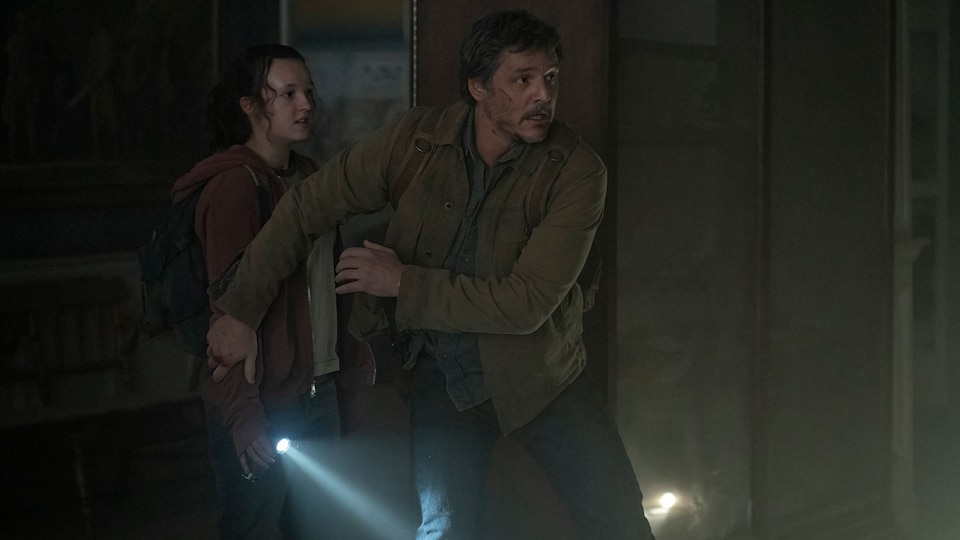A New Era Behind the Camera
After shepherding the first two seasons to critical acclaim, Neil Druckmann is handing day-to-day control of the HBO adaptation to his longtime collaborator Craig Mazin. Druckmann will remain an executive producer while returning full-time to Naughty Dog, where a new original game is ramping up. Halley Gross, who co-wrote the Season 2 finale, is also departing the writers’ room.
That leaves Mazin—fresh off a Writers Guild Award for Season 1—as sole showrunner. He has already hinted the story may ultimately need a fourth season, depending on how much of The Last of Us Part II he can fit into the upcoming run.
Where the Story Goes Next
Season 3 pivots to Abby Anderson’s perspective, charting her tense journey through Seattle’s WLF–Seraphite conflict and her collision course with Ellie’s quest for revenge. This shift mirrors the game’s structure but gives the series room to dig deeper into Abby’s motivations, her complicated bond with Lev, and the moral gray areas that divided fans when Part II launched. Ellie and Dina will still appear—largely in flashbacks that explore life in Jackson—but the bulk of the narrative belongs to Abby. Expect the show to linger on themes of justice versus vengeance, survivor’s guilt, and the cost of cyclical violence.

Casting Updates
- Abby Anderson – Kaitlyn Dever returns after her Season 2 cliff-hanger cameo, reportedly beginning a rigorous strength-training regimen months ahead of filming.
- Ellie Williams – Bella Ramsey remains under contract for the flashback episodes and a smaller present-day arc set in Jackson.
- Isaac Dixon – Jeffrey Wright is in negotiations to reprise the role he voiced in the game, bringing added star power to the WLF side of the conflict.
Additional roles—Lev, Yara, Manny, and Nora—are expected to be announced once the writers’ room locks the full episode order.

Production Roadmap
HBO green-lit Season 3 in April 2025, immediately reserving Vancouver soundstages that doubled for the Pacific Northwest during Season 2. British Columbia’s 28 percent labor tax credit and abundant rain-soaked forests make it a cost-effective stand-in for Seattle’s overgrown skyline. Writing is slated to begin late 2025; early scouting is already under way along Vancouver’s Fraser River industrial corridor, where set designers are mapping out WLF checkpoints and Seraphite island villages. Filming is expected to run from May through October 2026, giving visual-effects houses nearly a year to render larger Clicker hordes and infected wildlife hinted at by the art department.
Episode Count, Budget, and Scope
Mazin says the plan is to outdo the scale of Season 2, which averaged $14 million per episode. Internal HBO projections peg Season 3 at 10 episodes (up from Season 2’s eight) with a per-episode budget flirting with $18 million—putting it in the same ballpark as House of the Dragon. The extra runtime should let the writers weave Abby’s arc, Ellie’s Jackson interludes, and the Seraphite civil war without the time-jumps that divided viewers last year.
Fan Sentiment and Industry Buzz
The creative shuffle has generated a split reaction. Some fans worry that losing Druckmann and Gross could dilute the adaptation’s authenticity; others point to Mazin’s track record on Chernobyl and the faithful treatment of Season 1 as proof the show is in capable hands. Industry analysts note that viewership dipped 12 percent during Season 2’s back-half—largely attributed to its darker tone—but HBO’s streaming minutes still topped Sunday-night competitors.
Executives reportedly see Season 3 as the franchise’s make-or-break moment, banking on Abby’s narrative to reignite mainstream interest and expand merchandising opportunities ahead of the PlayStation 6 launch cycle.
Quick-Reference Snapshot
| Focus Area | Details |
|---|---|
| Showrunner | Craig Mazin (sole) |
| Departing Creatives | Neil Druckmann, Halley Gross (remain executive producers) |
| Primary Storyline | Abby’s Seattle arc; Ellie/Dina flashbacks in Jackson |
| Episode Count Target | 10 episodes (longer than Season 2) |
| Production Window | May – October 2026 (Vancouver, BC) |
| Estimated Budget | ~$18 million per episode |
| Probable Premiere | First half of 2027 |
| Future Outlook | Mazin hopes momentum secures a Season 4 to complete Part II narrative |
| Fan Sentiment | Mixed: cautious optimism vs. concern over creative departures |
The Best Interactive Story Games Available
Interactive story games let players shape the plot with their choices. These games blend storytelling and gameplay in ways that make each playthrough unique. The best interactive story games deliver rich narratives where player decisions have real consequences, creating personalized adventures that feel different for each player.
From fantasy worlds to historical settings, interactive stories span many genres and themes. Some focus on character relationships, while others emphasize moral choices or puzzle-solving. These games often feature multiple endings, encouraging players to replay them to discover different outcomes.
1) Assassin’s Creed Odyssey
Assassin’s Creed Odyssey takes players to Ancient Greece in one of the most engaging interactive story games ever made. The game follows either Alexios or Kassandra, giving players their first true character choice in the series.
The story branches in many ways based on player choices. Your decisions affect relationships, quests, and even the ending of the family storyline that forms the heart of the game.
Combat feels fluid and responsive, with special abilities that add depth to every fight. You can become a warrior, hunter, or assassin based on how you play and which skills you pick.
The game world is huge and packed with things to do. Ancient Greece comes alive with its attention to detail, from busy cities to quiet islands.
Players can sail across the Aegean Sea, climb mountains, and explore ruins. Each location has its own stories and secrets to find.
The family storyline gives the game emotional weight. Players search for their lost family while uncovering a conspiracy that threatens all of Greece.
Side quests feel meaningful rather than just filler content. Many tell stories that reveal more about the world and its people.
Odyssey marks a clear shift toward RPG gameplay in the series. Dialogue options, character builds, and romance options give players true agency.
Critics have praised the game for its engaging story and beautiful world. The mix of history and myth creates a unique experience.
With over 100 hours of content, Odyssey offers more story options than most games on this list. Each playthrough can feel different based on the choices you make.
2) Assassin’s Creed Valhalla
Assassin’s Creed Valhalla stands out as a story-rich Viking adventure that puts players in control of Eivor, a fierce Norse warrior. The game mixes action with deep storytelling set in 9th century England during the Viking invasions.
Players make key choices that shape the story and alliances throughout the game. These decisions impact how settlements grow and which storylines open up, giving each player a unique experience.
The game features a massive open world with stunning landscapes of Norway and England. You can explore ancient ruins, bustling towns, and thick forests while meeting interesting characters along the way.
Many players consider Valhalla one of the best in the series for its story depth. The game connects personal tales with larger historical events, making the Viking age feel alive.
The game includes fun mini-games like drinking contests, dice games, and fishing that add life to the world. These activities provide breaks from the main story while adding to the Viking experience.
The Discovery Tour mode offers a unique educational experience. Players can learn about actual Viking history and culture without combat, making it both fun and informative.
Combat feels weighty and brutal, matching the Viking theme perfectly. Players can dual-wield weapons, use shields, and unlock special abilities that fit their play style.
While some critics point out the game’s icon-filled map as overwhelming, the strong character development keeps players invested. The relationship between Eivor and their clan provides emotional weight to the adventure.
Fans praise the game’s beautiful settings and compelling saga. The snowy mountains of Norway and green fields of England create a stunning backdrop for this interactive story.
3) Detroit: Become Human
Detroit: Become Human stands out as one of the most visually impressive interactive story games. Released in 2018, this game puts players in control of three different android characters through episodic chapters.
The game takes place in a future where androids have become common in society. Players make choices that shape the story in significant ways. Each decision affects how the narrative unfolds.
What makes Detroit: Become Human special is how your choices create real consequences. The game tracks every decision you make. This choice-based structure means no two players will have the exact same experience.
The game features amazing graphics and performances from talented actors. These elements help bring the story to life. The three main characters each have their own storylines that eventually connect.
Detroit: Become Human asks big questions about what makes someone alive. It explores themes of freedom, consciousness, and human rights. These themes feel both futuristic and relevant to today.
The game has been praised for its engaging storyline and how choices create ripple effects. Your decisions can lead to characters living or dying.
While some critics point out that the writing sometimes relies on the fantastic actors and graphics to prop it up, many players find the story compelling. The game rewards multiple playthroughs to see different outcomes.
As a story-driven game with branching narratives, Detroit: Become Human delivers a memorable experience. It challenges players to think about complex issues while enjoying an interactive story.
4) Heavy Rain
Heavy Rain is a game that breaks new ground in interactive storytelling. Released in 2010 by developer Quantic Dream, it puts players in control of four characters all connected to the Origami Killer case.
The game stands out for its unique approach to player choice. Each decision you make can lead to dramatically different outcomes, including the death of main characters. This creates a truly personal experience where your actions matter.
The story follows Ethan Mars, a father desperate to save his son from a serial killer. Players must complete increasingly difficult trials to prove how far they’ll go to save someone they love.
What makes Heavy Rain special is its emotional impact. The game uses motion capture technology to create realistic characters that draw you into their world. Their pain and struggles feel real.
Heavy Rain is one of the first interactive experiences to fully immerse players in its dark, rainy world. The weather itself becomes almost a character in the story.
Players must think carefully about their choices. The game keeps track of decisions and changes the story based on what you do. This makes every playthrough unique.
Critics praised Heavy Rain for its engaging narrative and final twist. It pushed what was possible with storytelling in games. Many later games copied its choice-based approach.
The four playable characters each bring their own viewpoint to the story. This gives players different ways to interact with the world and solve the mystery.
5) Life is Strange
Life is Strange is a standout in the interactive story game genre. It follows Max Caulfield, a photography student who discovers she can rewind time after witnessing a tragic event.
This game made waves with its thoughtful approach to tough topics like bullying, mental health, and friendship. The choices you make truly matter, affecting not just the ending but how other characters treat you throughout the story.
The small town of Arcadia Bay serves as the perfect backdrop for this coming-of-age tale. The art style has a hand-painted quality that adds to its dreamy atmosphere.
What sets Life is Strange apart is how it handles player choice. Unlike games with obvious “good” or “bad” options, many decisions lead to complicated outcomes with no clear right answer.
The LiS series allows players more control over what happens compared to other story games. While the first game remains the most popular, it has spawned several sequels and prequels.
Music plays a key role in setting the mood, with an indie folk soundtrack that perfectly captures the game’s emotional tone. These songs often play during quiet moments of reflection.
The bond between Max and her friend Chloe forms the heart of the story. Their relationship feels real and grows based on your choices.
If you enjoy Life is Strange, games like Tell Me Why and The Awesome Adventures of Captain Spirit offer similar emotional storytelling experiences.
6) The Walking Dead: The Telltale Series
Telltale Games created a masterpiece with their adaptation of The Walking Dead. Released in 2012, this game changed how many people viewed interactive storytelling in video games.
The Walking Dead puts players in the shoes of Lee Everett, a man with a troubled past who finds himself protecting a young girl named Clementine during a zombie apocalypse. The game forces players to make tough choices that impact the story.
What makes this game stand out is its emotional depth. Players form genuine connections with characters, making the inevitable losses hit harder. The character-driven interactive story keeps players engaged throughout.
Telltale released the game in episodes, creating anticipation between releases. This format worked perfectly for the dramatic storytelling style. Each episode ends with tough decisions that carry into the next part.
The game earned widespread praise from critics and players alike. It won numerous Game of the Year awards and appears on many lists of best Telltale games. Its success led to multiple seasons and spinoffs.
The Walking Dead’s success comes from its strong writing and meaningful player choices. Unlike many games where choices feel empty, this one makes players truly consider the consequences of their actions.
The art style uses a comic book aesthetic that matches the source material while standing on its own. This style helped the game age well despite technology advances since its release.
Many fans consider it one of Telltale’s finest works, often ranking it in their top three Telltale games of all time. Its influence extends beyond its own series, inspiring many similar games.
7) Beyond: Two Souls
Beyond: Two Souls is an interactive drama created by Quantic Dream. It was first released for PlayStation 3 in 2013 and later came to other platforms.
The game tells the story of Jodie Holmes, a young woman with a unique link to a spirit entity named Aiden. This connection gives her supernatural abilities that shape her life path.
Players control both Jodie and Aiden throughout the story. The game jumps between different periods of Jodie’s life, from childhood to adulthood.
What makes Beyond: Two Souls stand out is its movie-like quality. The performances of Ellen Page (now Elliot Page) and Willem Dafoe bring depth to the characters.
Your choices matter in this game. Each decision affects how the story unfolds, creating a personal experience for each player.
The gameplay mixes traditional controls with motion elements. Simple movements and quick-time events keep players engaged with the story.
The game tackles themes of identity, connection, and what lies beyond death. It asks big questions while keeping the story grounded in human emotion.
Some players list this title among their top story games, alongside hits like God of War and The Last of Us. Others prefer games with more player agency.
Beyond: Two Souls shines brightest in its emotional moments. The bond between Jodie and Aiden creates tensions and choices that feel meaningful.
For fans of story-driven experiences, this game offers a unique journey that blends supernatural elements with very human struggles.
8) The Wolf Among Us
The Wolf Among Us is often praised as one of Telltale Games’ best story games. It stands out as a dark noir story set in a world where fairy tale characters live in secret among humans.
Players take on the role of Bigby Wolf, the reformed Big Bad Wolf who now works as sheriff. The game puts you in charge of solving a murder mystery in Fabletown.
What makes this game special is its unique setting. It’s based on the comic series Fables, bringing fairy tale characters into a gritty modern world. The art style uses bold colors and comic book visuals that pop off the screen.
The choices in this game feel meaningful. Each decision shapes how other characters see Bigby and affects the direction of the story. Will you be the monster everyone fears or prove you’ve changed?
The Wolf Among Us has strong writing and voice acting. The characters feel real despite their fairy tale origins. You’ll meet twisted versions of Snow White, Beauty and the Beast, and many others.
Many fans consider it the perfect Telltale game, combining a rich world with tough moral choices. The game balances detective work, character development, and action scenes nicely.
If you enjoy The Wolf Among Us, you might also like other story-rich games like Life is Strange and Heavy Rain. These games share a focus on character-driven narratives and important player choices.
The game takes about 10 hours to complete. This makes it perfect for players who want a complete story without a huge time commitment.
9) Our Life: Beginnings & Always
Our Life: Beginnings & Always stands out as a fully customizable visual novel where players create their own unique experience. The game follows the main character from childhood to adulthood alongside the boy next door.
Players can design their character exactly how they want, changing appearance, personality, and preferences at different life stages. This freedom lets everyone craft a story that feels personal and meaningful.
The game focuses on building a relationship with Cove Holden, the lonely boy next door. Their bond grows through four life stages: childhood, teen years, young adulthood, and adulthood.
What makes this game special is its feel-good atmosphere and emotional depth. Players experience joy, sadness, stress, and worry in a safe, comforting setting.
The story unfolds in a small beach town, creating a nostalgic summer vibe. Players make choices that shape not just their character but also how Cove responds to them.
Fans praise the game for its heartfelt moments and emotional impact. Many players connect deeply with the characters and story.
The game offers impressive replay value. Different choices lead to new scenes and relationship dynamics, making each playthrough fresh and engaging.
Our Life: Beginnings & Always shows how interactive fiction can create meaningful emotional experiences. It proves that simple game mechanics can still deliver rich storytelling when paired with well-written characters.
10) Chapters: Interactive Stories
Chapters is a popular mobile game that lets players choose their own path in every story. The app features a wide range of romance-focused interactive stories where your choices shape the outcome.
The game offers stories across many genres including romance, fantasy, and mystery. Players can customize their characters in many stories, picking outfits and hairstyles that match their style.
Chapters: Interactive Stories is available on iOS, Android, and Amazon App Store. The app has built a large following with over 305,000 likes on its Facebook page.
One of the main features of Chapters is its choice-based gameplay. As you read through the story, you’ll face decisions that change how events unfold and affect your relationships with other characters.
The app updates regularly with new stories based on popular books and original content. Many stories feature gorgeous artwork and character designs that bring the narrative to life.
Players can enjoy the first few chapters of each story for free. Premium choices that enhance the storyline or romantic options require diamonds, the game’s premium currency.
Compared to other visual story apps, Chapters stands out for its focus on romantic storylines and adaptation of existing novels into interactive adventures.
The interface is user-friendly, making it easy for new players to jump in. Stories are broken into short chapters that can be enjoyed in quick play sessions.
The game also features a ticket system that limits how many chapters you can read in one sitting. Tickets refill over time or can be purchased with real money.
11) Fallen London
Fallen London is a text-based browser game set in an alternate Victorian London that has fallen beneath the surface. Players explore this underground city through bite-sized stories and choices.
The game features some of the best writing in interactive fiction. Its unique setting blends gothic horror, steampunk, and dark fantasy elements to create a compelling world.
Unlike many games, Fallen London is designed to be played in short sessions throughout the day. It limits the number of actions you can take, encouraging players to return regularly.
Players build various skills as they navigate the city’s mysteries. You can become anything from a poet to a spy in this strange underground world.
The story unfolds through small pieces, allowing players to discover the city’s secrets at their own pace. This approach makes the game more about exploration than a linear plot.
Fallen London connects to other games like Sunless Seas and Sunless Skies, which are set in the same world. These other titles offer more traditional gameplay while Fallen London focuses on interactive storytelling.
The game stands out for its quality of writing, which many players consider exceptional. Its text creates vivid images without graphics.
For those who enjoy horror, Fallen London offers plenty of creepy moments. The game’s creators have even shared tips on writing interactive horror based on their experiences.
Players can enjoy the base game for free, though some content requires payment. This makes it easy to try before deciding to invest more time or money.
12) Killer Chat!
Killer Chat! is a unique interactive story game that blends dark humor with romance. In this chat simulator, players pretend to be serial killers or interact with them for various purposes.
The game offers a satirical take on dating sims, putting players in unusual scenarios. You might be gathering inspiration for a book or even finding romance with the killers you chat with.
Players make choices that lead to different story paths. The game features branching narratives that can result in multiple unique endings based on your decisions.
The Christmas special version, A Very Killer Chat! Christmas, adds holiday-themed content to the mix. This version includes phone calls to serial killers and ways to earn approval (or disapproval) from the characters.
The game uses a text-based chat format that makes it easy to play. The simple interface lets you focus on the story and character interactions.
Created by rosesrot and Wind Chimes Games, Killer Chat! stands out for its dark satire approach. It takes the dating sim genre in an unexpected direction that some players find refreshing.
The game’s writing balances humor with darker themes. This mix creates an unusual gaming experience that isn’t quite like other interactive fiction games.
For those who enjoy games that push boundaries with their storytelling, Killer Chat! offers something different. It’s worth trying if you like games that combine choices, unusual premises, and satirical writing.
13) The Dark Queen of Mortholme
The Dark Queen of Mortholme flips traditional gaming on its head. In this unique 20-minute interactive fiction game, you play as the boss instead of the hero.
You take the role of the Dark Queen, the most powerful being in the universe. When a hero breaks into your lair, you must decide how to respond to this threat.
The game explores an unconventional relationship and the capacity for change. Players face moral choices that shape the story’s direction and ending.
There are multiple endings to discover based on your actions. You can choose to fight the hero in a traditional boss battle or explore other, less violent options.
The gameplay focuses on choice rather than skill. Your decisions about how to treat the hero drive the narrative forward and determine which ending you’ll see.
Despite its short length, the game packs emotional depth. It questions standard video game tropes about heroes, villains, and the nature of conflict.
The Dark Queen of Mortholme can be played on various platforms including Android devices. Its accessibility makes it easy for anyone to try this thought-provoking experience.
The game’s creator, Mosu, describes it as an “anti-game.” This term hints at how it works against typical gaming expectations and formulas.
For players who enjoy stories that make them think, The Dark Queen of Mortholme offers a fresh perspective. It stands out by letting players experience a familiar scenario from the other side.
14) Monochrome Pixels
Monochrome Pixels is a standout in the interactive fiction genre that combines striking visuals with compelling storytelling. This game features a distinctive art style that uses limited color palettes to create an emotionally rich experience.
Players often refer to the main character as “our pocket blue boi,” highlighting the game’s unique character design that has won fans over. The autumn-themed red panda character also adds visual interest to the game’s world.
The game shows impressive polish in all aspects of its production. From its user interface to its narrative choices, Monochrome Pixels demonstrates careful attention to detail.
What sets this game apart is how it uses simple pixel art to convey complex emotions. The limited color scheme doesn’t limit the game’s ability to tell a moving story.
The choices players make throughout the game matter, affecting relationships and story outcomes. This gives the game strong replay value as players can explore different paths.
Created by the team at HusbandoGoddess along with collaborators prikarin and skai2blue4u, the game has built a dedicated following on the itch.io platform.
Players looking for a visually distinct interactive story with heart will find Monochrome Pixels offers a refreshing take on the genre. The game proves that pixel art can be just as emotionally impactful as more realistic graphics.
15) Night in the Woods
Night in the Woods is a story-focused adventure game that stands out with its unique art style and deep narrative. Players control Mae Borowski, a college dropout who returns to her hometown of Possum Springs.
The game focuses on exploration and character interactions rather than combat. Players spend most of their time learning about characters’ personal lives while also uncovering the main story.
What makes Night in the Woods special is its honest portrayal of small-town life and mental health struggles. The dialogue feels real and the characters face problems many players can relate to.
The gameplay mixes platforming elements with mini-games that keep things interesting. You can steal things and play bass guitar throughout your adventure in Possum Springs.
Many fans consider it an example of what indie games hope to be. The game excels in storytelling, art direction, and creating a world that feels lived-in.
If you enjoy games like Oxenfree, Life is Strange, or Telltale’s Walking Dead, Night in the Woods will likely appeal to you. These games share a focus on story and character development.
Night in the Woods proves that video games can tell moving stories about real issues. It tackles themes of economic hardship, friendship, and finding your place in the world with care and honesty.
16) Firewatch
Firewatch is a first-person adventure game that puts players in the shoes of Henry, a fire lookout in Wyoming’s wilderness. The game was created by Campo Santo, a small studio that focused on crafting a meaningful story experience.
The gameplay centers around Henry’s relationship with his supervisor Delilah, who he talks to only through a handheld radio. Their conversations change based on the choices players make, creating a personal experience.
The game’s setting in the Shoshone National Forest is beautiful, with a striking art style that captures the isolation and beauty of the wilderness. Players explore this world while solving a mystery that unfolds during a hot summer in 1989.
What makes Firewatch special is its emotional storytelling. It tackles themes of escape, responsibility, and human connection in ways that feel real and touching.
Many players finish Firewatch in about 6 hours, though some enjoy a second playthrough to see how different choices affect the story. The game is often listed among the best interactive story games because of its strong writing.
If you enjoyed Firewatch, you might also like Oxenfree, which has a similar focus on dialogue and story choices.
Campo Santo clearly made this game with key goals: to pull players into a rich story world, create honest characters, and build an experience that sticks with players long after they finish.
17) Stories Untold
Stories Untold is a unique collection of four short text-based adventure games that blend classic text interfaces with modern gameplay. Released by No Code in 2017, this game has gained praise for its creative storytelling.
The game includes a remastered version of “The House Abandon” plus three new episodes. Each part uses different puzzle mechanics while connecting to a larger story.
Players interact with various old-school devices like text terminals, lab equipment, and radio systems. The mix of text adventures with physical interfaces creates a fresh gaming experience.
The atmosphere in Stories Untold is rich with 1980s nostalgia. The synth soundtrack and retro visuals help build tension throughout each episode.
The storytelling is praised as revolutionary and unique. The game surprises players with clever plot twists that tie the separate episodes together.
Each chapter feels distinct but connects to form a complete narrative. The game’s experimental approach to text adventures brings new life to this classic genre.
Players who enjoy psychological horror will find much to love in Stories Untold. The game builds dread through its writing rather than relying on cheap scares.
The puzzles range from typing commands to manipulating lab equipment. This variety keeps the gameplay fresh across the roughly 3-hour experience.
Critics have praised Stories Untold for its innovative approach. The game holds strong ratings on Metacritic for its creative storytelling and atmosphere.
For anyone seeking a short but powerful interactive story, Stories Untold delivers an unforgettable experience that proves text adventures still have plenty to offer modern gamers.
18) Brothers: A Tale of Two Sons
Brothers: A Tale of Two Sons is a beautiful indie game released in 2013 by Starbreeze Studios and directed by Swedish filmmaker Josef Fares. It stands out as a unique adventure that follows two brothers on a quest to find medicine for their dying father.
The game uses an innovative control system where players control both brothers at once – one with each analog stick. This creates a special bond between the player and the characters as you guide them through their journey together.
The world of Brothers is gorgeous and handcrafted, filled with fairy tale elements and stunning landscapes. Players solve puzzles that require both brothers to work together, each with their own skills and abilities.
Without using words, the game tells its story through actions and emotions. The brothers must rely on each other to overcome obstacles, creating a strong feeling of teamwork and connection.
The game received high praise from critics, including an 8.2/10 score from IGN. It also won the Best Game Innovation Award at the 2014 British Academy Games Awards.
Brothers delivers a powerful emotional experience in just 3-4 hours of gameplay. The story takes unexpected turns that make players feel deeply for the characters.
Available on multiple platforms including Steam, the game proves that interactive storytelling doesn’t need complicated systems or dialogue trees to be effective.
The game’s clever design uses gameplay mechanics to tell its story, making it a perfect example of how games can create unique emotional connections that other media cannot match.
19) What Remains of Edith Finch
What Remains of Edith Finch is a first-person adventure game that tells the story of the Finch family. The game follows Edith as she returns to her old family home to learn about her past and the strange deaths that affected her relatives.
The house itself is like a character in the game. It’s filled with secret passages and sealed bedrooms that hold clues about each family member’s life and death.
As players explore the Finch house, they experience different gameplay mechanics for each family member’s story. These changing styles keep the game fresh and interesting.
The game stands out because of how it tells its stories. Each tale uses unique visuals and controls that match the personality of the family member you’re learning about.
Critics praise What Remains of Edith Finch for its elegant storytelling and emotional impact. Many consider it one of the best interactive stories available.
Some fans see it as more of a visual novel than a traditional game. The focus is on the narrative rather than complex gameplay or puzzles.
The game uses interactive entertainment in unique ways to show different perspectives. This approach helps players connect with the characters on a deeper level.
Despite its sad themes, the game balances darkness with moments of beauty and wonder. The stories are tragic but told with care and creativity.
What Remains of Edith Finch typically takes about 2-3 hours to complete. This short length helps keep the experience focused and meaningful without unnecessary padding.
20) Oxenfree
Oxenfree is a supernatural horror adventure game that puts players in control of Alex, a teenager who accidentally opens a ghostly rift on an abandoned island. The game stands out for its lack of cutscenes, keeping players immersed in the story at all times.
The dialogue system is what makes Oxenfree truly special. Players choose conversation options that appear as speech bubbles above Alex’s head, and can even interrupt other characters or stay silent, affecting relationships and story outcomes.
The game’s hand-painted art style creates an eerie yet beautiful atmosphere. Its haunting landscapes and visual glitches add to the supernatural feel without relying on jump scares.
Sound design in Oxenfree is exceptional. The crackling radio that picks up ghostly signals becomes both a gameplay tool and a source of dread. The synth-wave soundtrack perfectly matches the game’s 1980s-inspired setting.
Choices matter in Oxenfree. The game tracks your decisions throughout, leading to multiple endings based on how you treat others and handle supernatural events. This gives the roughly 5-hour story strong replay value.
The team at Night School Studio created a captivating narrative that blends teen drama with ghost stories. The characters feel like real teenagers with actual problems, making their supernatural predicament more gripping.
For players who enjoy games like Firewatch or Night in the Woods, Oxenfree offers similar storytelling depth. Its mix of coming-of-age themes with supernatural mystery creates a unique gaming experience.
Understanding Interactive Story Games
Interactive story games blend traditional storytelling with player choices, creating unique experiences where your decisions shape the narrative path. These games have evolved significantly since their text-based beginnings.
Defining Interactive Storytelling
Interactive storytelling in games refers to narratives that change based on player input. Unlike linear media, these games let players make meaningful choices that affect the story’s direction and outcome.
The key elements include:
- Player agency: The ability to make decisions that matter
- Branching narratives: Multiple story paths based on choices
- Character development: Relationships and personalities that evolve with player decisions
- Consequences: Outcomes that reflect previous choices
These games often feature dialogue options, decision points, and multiple endings. Some focus on character relationships, while others emphasize moral dilemmas or puzzle-solving within the narrative framework.
PCMag’s list of top interactive story games notes that strong narratives can be just as important as graphics or gameplay mechanics.
History and Evolution
Interactive storytelling began with text adventures like “Zork” and “Colossal Cave Adventure” in the 1970s. These games used text commands to navigate stories and solve puzzles.
The 1980s brought graphic adventures from companies like Sierra and LucasArts. The 1990s saw the rise of CD-ROM games with full motion video and voice acting.
Modern interactive story games include:
- Visual novels: Text-heavy games with character artwork and minimal animation
- Choice-based adventures: Games like those from Telltale or Quantic Dream
- Hybrid approaches: RPGs with strong narrative elements
Technology has enabled more complex choice systems and realistic character interactions. Games can now track dozens of variables to create personalized story experiences.
According to Emily Short’s Interactive Storytelling blog, the genre continues to evolve with indie developers pushing creative boundaries alongside major studios.
Design Elements of Interactive Story Games
Interactive story games blend player choice with compelling narratives. The best games in this genre balance strong storytelling with mechanics that give players meaningful control over how events unfold.
Narrative Structures
Interactive stories use different structures to shape player experiences. Linear stories offer limited but meaningful choices along a main path. Branching narratives create multiple storylines based on player decisions, with games like “The Walking Dead” showing how choices affect relationships and outcomes.
Procedurally generated narratives create unique stories each playthrough. Dwarf Fortress stands out by creating complex histories and interactions through its systems.
Hub-and-spoke structures let players explore a central area with branching story points they can tackle in different orders. This gives freedom while maintaining narrative control.
The most effective games match their narrative structure to the story they want to tell. Some mix approaches for deeper experiences.
Game Mechanics in Storytelling
Game mechanics must support the story rather than feel disconnected. Five core elements of interactive storytelling include focusing on narrative while ensuring most time is spent in active play.
Key mechanics in story games include:
- Dialogue systems with meaningful choices
- Character stats that affect story options
- Consequence tracking across gameplay
- Environmental storytelling through exploration
Stats in these games often reflect personality traits or skills that unlock new story paths. Many games use relationship systems to track how characters feel about the player.
The best interactive stories make player actions feel important. When mechanics and narrative work together, players feel their choices truly matter to the story world.
Frequently Asked Questions
Players often want to know which interactive story games are worth their time on different platforms. These questions cover top recommendations across Android, PC, free online options, PlayStation 4, Nintendo Switch, and mobile games with strong narratives.
What are the top rated interactive story games available on Android devices?
Android users have several excellent interactive story games to choose from. “Life is Strange” offers a compelling time-manipulation narrative that has been successfully adapted for mobile play.
Choice of Games and Hosted Games publish text-based adventures on Android that feature deep branching narratives. These games focus on player choices that significantly impact the story.
Telltale Games’ series like “The Walking Dead” and “The Wolf Among Us” are highly rated on Android. They combine strong storytelling with meaningful decision-making mechanics.
Which interactive story games on PC offer the best narrative experiences?
PC players can enjoy “Detroit: Become Human,” which explores artificial intelligence through three android protagonists. The game features stunning visuals and numerous possible story outcomes.
“Disco Elysium” stands out for its unique approach to role-playing and narrative depth. Players solve a murder mystery while dealing with the protagonist’s complex psychology.
Both “Assassin’s Creed Odyssey” and “Assassin’s Creed Valhalla” offer rich historical settings with branching dialogue options and multiple story paths. These games blend action with meaningful narrative choices.
Can you recommend any interactive story games that are free to play online?
Several quality interactive fiction games are available for free online. Many classic text adventures can be played through web browsers without any cost.
Choice of Games offers some free titles on their website that provide engaging branching narratives. These stories cover various genres from fantasy to romance.
Twine games represent a thriving community of free interactive stories. These HTML-based games are often experimental and cover unique themes not found in mainstream titles.
What are the most immersive interactive story games on PlayStation 4?
“Heavy Rain” remains one of the most immersive interactive experiences on PlayStation 4. This thriller follows four characters investigating the Origami Killer with multiple possible endings.
“Until Dawn” uses the butterfly effect mechanic to track player choices. This horror game features realistic character models and a story that can end with all characters surviving or dying.
“Detroit: Become Human” takes full advantage of the PS4’s hardware for photorealistic characters. The game’s branching narrative shows the consequences of choices through detailed flowcharts.
Which interactive story games for the Nintendo Switch are considered must-plays?
“Life is Strange” and its sequels have been well-received on the Nintendo Switch. These games offer emotional storytelling with time manipulation mechanics.
“Firewatch” provides a unique narrative experience in the Wyoming wilderness. The game focuses on dialogue choices and relationship building between the main characters.
“Night in the Woods” combines platforming with deep storytelling. This game addresses themes of mental health and small-town life through a cast of animal characters.
What mobile interactive story games are known for having compelling storylines?
“Florence” tells a beautiful story about love and personal growth. This mobile game uses simple but effective interactive mechanics to convey emotion.
“80 Days” reimagines Jules Verne’s classic novel with steampunk elements. Players navigate complex branching narratives while traveling around the world.
Telltale’s games like “The Wolf Among Us” are widely considered to have compelling mobile storylines. Their adaptation of comic book characters into interactive narratives works well on smaller screens.







